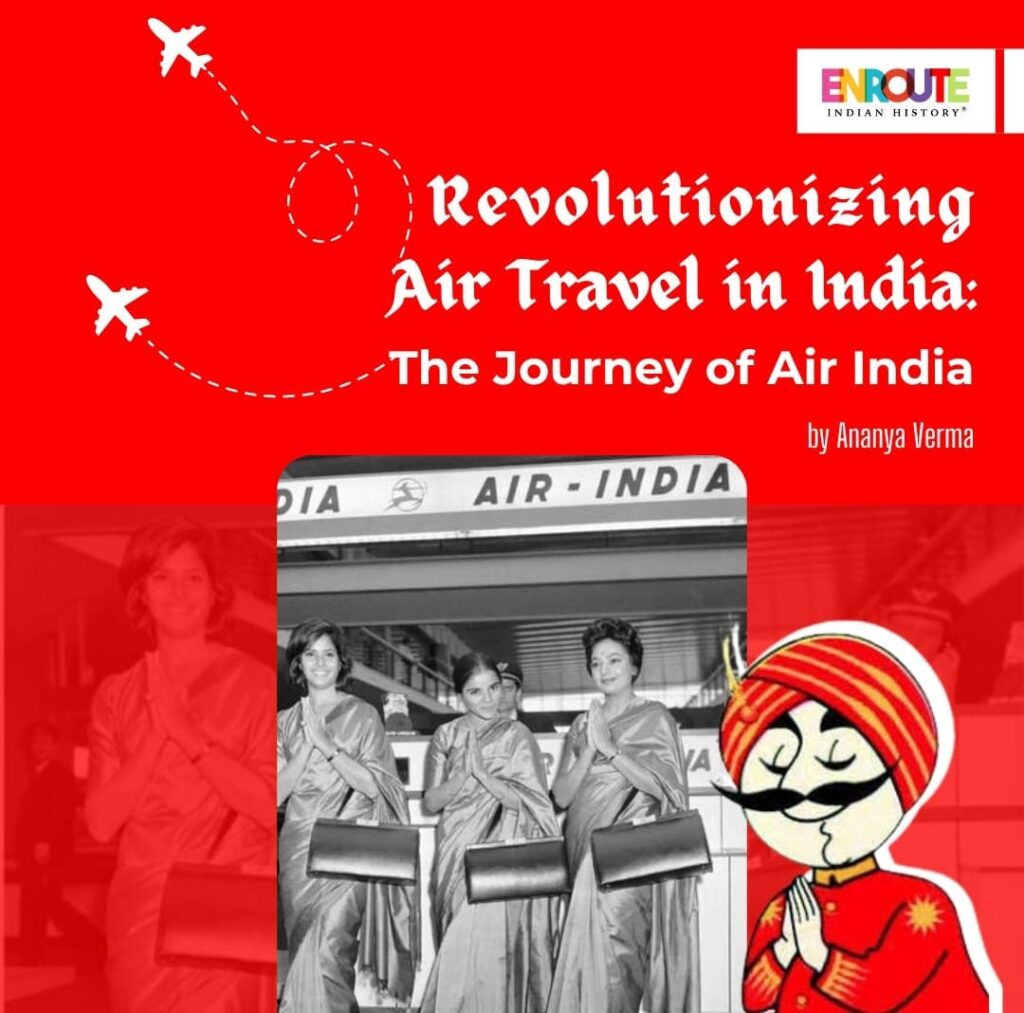
Air India, the trailblazer airline, which not only established the meaning of traveling by plane in India but also personified the Indian culture in this Western-dominated industry, resulted from a vision of J.R.D Tata to revolutionize the field of aviation in India. Although its beginnings lie in the colonial period, it became an icon of independent India. Its journey from Tata Airlines to a nationalized airline and then going back into the world of Tata has defined its 90-year-old legacy.

J.R.D Tata
Air India was established in 1932 as Tata Airlines by Jehangir Ratanji Dadabhoy Tata along with his collaborator Mr.Nevill Vintcent, a former royal air force pilot. J. R.D Tata was deeply interested in aviation and would go along to even become the president of the International Air Transport Association( IATA). The vision of Tata was perfectly complemented by the experience of Vintcent in creating an indigenous airline. The first scheduled flight flew on October 15, 1932, from Karachi to Bombay, piloted by J.R.D Tata himself. Tata had convinced the colonial government to provide him a chance to carry the mail from Karachi to Bombay, earlier taking days to reach his destination, by a plane that materialized into the beginning of Air India. Eventually, passenger flights were introduced not only on the domestic front but also internationally.

Map of the Earliest routes of Tata Airlines
As the second world war started, all the airplanes of Tata Airlines were acquired by the colonial government. In 1946, after the end of the war, Tata decided to transform tata airlines into a Public company, naming it Air India, offering 49 percent of the ownership to the government. He believed that this airline had great potential to contribute to the economic and political development of independent India. The transformation also included a clause that allowed the new government to acquire another 2 percent of the ownership in the airline which eventually did happen in 1953 under the Air Corporation Act. The act led to the merging of several airlines to nationalize air travel. Understanding the role and vision of J.R.D. Tata in the company, was invited to remain the chairman till 1977.
‘Atithi Devo Bhava’
In this period, it was clear that a new airline, such as Air India would find it extremely difficult to compete with foreign airlines in terms of the frequency of flights. This nudged Tata in a different direction. The values of the company started reflecting on the quality of the service, efficiency of operations, and adherence to schedules of the airline, attaching it to the Indian culture. The logo and mascot are the perfect representation of that. The logo is a red flying swan with circular white lines derived from the asoka chakra symbolizing the righteous duty connecting it deeply not only to the values of independent India and the responsibility of the company in contributing to it. The mascot on the other hand, the flying maharaja, introduced in 1946, symbolizes the royalty of service provided to the passenger on the plane. The maharaja is a steady companion who wishes to accompany the passengers to their destination.

 The Logo and the Mascot
The Logo and the Mascot
A similar approach was taken in the selection and training of the cabin crew. J.R.D Tata is believed to be a perfectionist in his approach as he steadily took part in the process. A stewardess was hired from Trans World Airlines ( TWA), one of the most well-known American airlines in the 1930s, to train the air hostesses. The first cabin crew member, Ray Salway Greenwell was also personally chosen by Tata. There was an image that was built around the female cabin crew members for their lifestyle and work. In the 1960s, air-India again became a pioneer in the industry by choosing to introduce silk sarees for air hostesses. This was another attempt to build the company as a symbol of Indian values around the globe.
The female cabin crew has not only been a symbol of luxurious flying but also of resistance in the aviation industry. In several instances, they have raised their concern about the unequal treatment of the female cabin crew. Like in the 1960s, the air hostesses were forced to retire either at the age of 30 or after getting married, whatever happened first, while the male cabin crew was allowed to have a longer career. The conditions improved as the time passed.

Air India Cabin Crew
In 1978, J.R.D Tata was removed from the position of Chairman, completely de-attaching it from the world of Tata. The journey ahead for Air India was a mixture of turbulence and clear skies. From, heart-wrenching attacks and accidents to increasing competition from the rise of several private airlines. There were several questions raised on the decision to continue to keep Air India nationalized as the quality of service continued decreasing. The airline was brought back into the Tata fold officially on January 27, 2022, starting a new chapter for this Airline.
The position of Air India in the aviation history of the country is irreplaceable. It might not hold a similar dominant position as it did once but its rich history makes it stand out. The legacy of Air India is that of perseverance and determination to navigate through good as well as bad times. It fulfilled its role to independent India by leaving its mark in the field of international aviation with its unmatched hospitality. As Air India enters this new chapter, it will be interesting to observe its legacy continue.
References
- Dhawan, S. (1994). J. R. D. Tata and Indian aviation. Current Science Association, 66(6), pp.452–454.
- https://archive.nytimes.com/india.blogs.nytimes.com/2012/10/15/when-air-india-was-efficient-profitable-and-growing-fast/#more-47319
- https://www.airindia.com/in/en/about-us.html
- https://timesofindia.indiatimes.com/home/sunday-times/from-silk-saris-to-sneakers-how-airline-fashion-has-evolved-over-the-decades/articleshow/92924619.cms
Pictures
1.https://www.tata.com/newsroom/heritage/jrd-tata-letter-schoolteacher
5.https://www.airindiacollector.com/picture-gallery.html
- May 15, 2024
- 6 Min Read


























